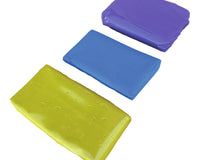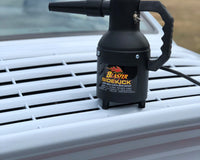Polishing pads are one of the most critical tools in the world of car detailing. Whether you are a professional detailer or an enthusiast working on your own vehicle, the type of pad you choose and how you use it can dramatically impact the quality of your paint correction. Polishing pads work as the interface between the machine polisher and the surface of the car, making them responsible for transferring the compounds and polishes evenly to achieve a smooth and refined finish. Without the right pad, even the best polish or compound may fail to deliver the expected results. This makes polishing pads a subject worth exploring in detail, especially for those aiming to enhance their car’s finish without unnecessary risk.
Understanding polishing pads is not just about knowing the colours or shapes; it is about grasping their construction, purpose, compatibility with polishes, and their role in specific correction stages. From cutting to finishing, each pad has a defined role, and knowing when to use them is what separates amateur results from professional detailing. When paired with the correct machine polisher and technique, polishing pads can restore paintwork, remove imperfections, and add clarity to the surface in a way that hand-polishing cannot achieve.
The market for polishing pads has grown significantly, especially with the rise of dual-action polishers, rotary machines, and microfibre technology. This expansion means more choice but also more confusion for users trying to decide which pad suits their detailing needs. Therefore, having a clear understanding of how polishing pads differ, how they work, and how to maintain them ensures not only better results but also longer-lasting tools that maximise investment.
Types of Polishing Pads
The first step in mastering polishing pads is to understand the various types available. Foam pads are perhaps the most common and versatile. They come in a range of densities and grades, typically colour-coded to represent their purpose, such as cutting, polishing, or finishing. Foam pads excel at distributing polish evenly and are gentle enough to use on a wide variety of paint types, making them a staple in many detailers’ kits.
Microfibre pads have become increasingly popular in recent years, particularly for their cutting ability. With their dense fibres, these pads are capable of levelling deeper scratches and oxidation more effectively than foam alone. They pair well with heavier compounds and can speed up correction work, though they often require a finishing step afterwards to refine the surface. This makes them a go-to option for detailers dealing with harder clear coats or significant paint defects.
Wool pads are the oldest type of polishing pad and remain highly effective for heavy cutting, especially when paired with rotary polishers. They have a natural ability to remove defects quickly but can also introduce holograms or swirls if not used correctly. For this reason, they are generally favoured by experienced users or those who need aggressive correction before moving to refining stages. Despite being less popular in consumer detailing kits, wool pads still have their place in high-level correction work.

Pad Colours and Their Meanings
Many pad manufacturers use colour-coding systems to differentiate between levels of aggressiveness. While these systems vary between brands, some general conventions exist. Cutting pads are often darker colours like red, blue, or black, and are designed for removing deeper imperfections. Polishing pads, usually medium colours such as orange or green, are intended for refining the surface and removing lighter swirls or haze. Finishing pads, commonly white or softer pastel colours, are designed for applying final polishes or glazes to enhance gloss.
The key to understanding pad colours lies not in memorising every brand’s system, but rather in recognising the underlying principle: harder, denser pads remove more defects, while softer, more open-cell pads refine and finish. Once you grasp this, navigating across different pad manufacturers becomes easier. This also ensures you can build a kit that covers cutting, polishing, and finishing stages without unnecessary duplication.
Some manufacturers have also introduced hybrid pads that aim to bridge the gap between two categories. For instance, medium-cut pads that combine defect removal with refinement, reducing the number of steps required. While these can be efficient, traditional three-step systems (cut, polish, finish) still provide the best overall control and results, especially when working on high-value vehicles or delicate paintwork.
Choosing the Right Pad for the Job
Selecting the right pad is about balancing the condition of the paintwork with the desired outcome. If your vehicle has heavy swirl marks, scratches, or oxidation, starting with a cutting pad paired with a suitable compound is usually necessary. However, following up with a polishing and finishing pad is essential to refine the surface, restore clarity, and avoid leaving behind marks from the aggressive first step.
For paintwork in good condition that only requires minor correction, skipping straight to a polishing pad may be more efficient. This allows you to refresh the surface, boost gloss, and prepare it for protection without unnecessary removal of clear coat. In contrast, finishing pads are best reserved for applying final-stage polishes, glazes, or even waxes and sealants, where their softness ensures no marring occurs during application.
Matching pads with the right polishes is also vital. A heavy compound with a finishing pad will not achieve much correction, while a finishing polish with a cutting pad may not refine properly. The combination of pad, product, and machine speed needs to work harmoniously to produce the desired result. Experimenting on a test panel before committing to the entire car is always a wise strategy.
Foam vs Microfibre vs Wool Pads
Foam pads remain the most versatile and beginner-friendly choice. They are forgiving, available in multiple densities, and effective across almost all stages of correction. For enthusiasts, a set of foam pads can cover most detailing needs without requiring too much technical knowledge. Their ability to finish down cleanly also makes them less likely to introduce issues that require additional correction.
Microfibre pads, however, bring an edge when it comes to efficiency. They can cut through defects faster, saving time on vehicles with harder paints or heavier imperfections. The drawback is that they tend to generate more heat and may leave micro-marring, which then requires a refining step. Nonetheless, many professionals favour microfibre pads for their ability to handle correction work in fewer passes.
Wool pads remain the specialists of the group. They excel in rapid correction on heavily neglected paintwork, particularly when paired with rotary polishers. However, their aggressive nature and tendency to leave behind holograms mean they are not typically recommended for beginners. They do, however, remain invaluable for professionals dealing with restoration projects or industrial-level detailing.
Maintenance and Longevity of Pads
Polishing pads may be consumables, but with proper care they can last significantly longer. Cleaning them thoroughly after each use is essential, as residues from polish and clear coat can clog the surface and reduce performance. Pad cleaning brushes, compressed air, or rinsing with water and mild detergents are all effective ways to restore pads. Ensuring they are dried properly before storage prevents mould and maintains their integrity.
Rotating between multiple pads during a detailing session is another key practice. As pads become saturated with product, their performance decreases. Switching to a fresh pad not only ensures consistent results but also prolongs the lifespan of each pad by reducing stress. Having at least two or three of each pad type is advisable for serious detailers.
Storing pads correctly also contributes to longevity. Keeping them flat, away from heat sources, and in a dust-free environment prevents warping and contamination. Investing in proper pad storage solutions may seem unnecessary, but it pays off in maintaining the quality of your detailing results over time.
Common Mistakes with Polishing Pads
One of the most frequent mistakes detailers make is using the wrong pad for the job. Trying to correct heavy defects with a polishing or finishing pad often leads to frustration and wasted time. Equally, using an aggressive pad unnecessarily can thin the clear coat and reduce the long-term durability of the paintwork. Understanding the condition of the surface and matching it to the appropriate pad is crucial.
Another mistake is failing to keep pads clean during use. Allowing pads to become clogged with residue not only reduces efficiency but also increases the risk of marring. Regularly cleaning pads mid-detail is a habit that significantly improves results. Overloading pads with product is also a common error, as it prevents proper cut and increases sling, wasting polish in the process.
Inadequate machine speed or pressure is another issue that often stems from inexperience. While the pad plays a central role, how it is used matters equally. Too much pressure with an aggressive pad can lead to overheating, while too little pressure may fail to achieve correction. Consistent technique is just as vital as pad choice.
Conclusion: Mastering Polishing Pads
Polishing pads are far more than simple accessories; they are the cornerstone of achieving professional-level detailing results. Understanding their types, purposes, and maintenance is the first step toward mastering paint correction. From foam to microfibre and wool, each pad has its strengths and weaknesses, and learning when to use them ensures the paintwork achieves its full potential.
For enthusiasts, starting with a small selection of foam pads provides a safe and versatile entry point. Professionals, however, may need a wider range that includes microfibre and wool to tackle more challenging projects. Regardless of experience, proper pad care, cleaning, and rotation remain non-negotiable practices that directly impact both performance and longevity.
Ultimately, polishing pads serve as the bridge between polishes and the paint surface. Mastering them requires patience, experimentation, and an eye for detail, but the rewards are undeniable. A well-chosen and well-maintained pad not only enhances the final finish but also makes the process more efficient and enjoyable. For those serious about car detailing, investing time in understanding polishing pads is one of the most valuable steps toward achieving showroom-quality paintwork.




